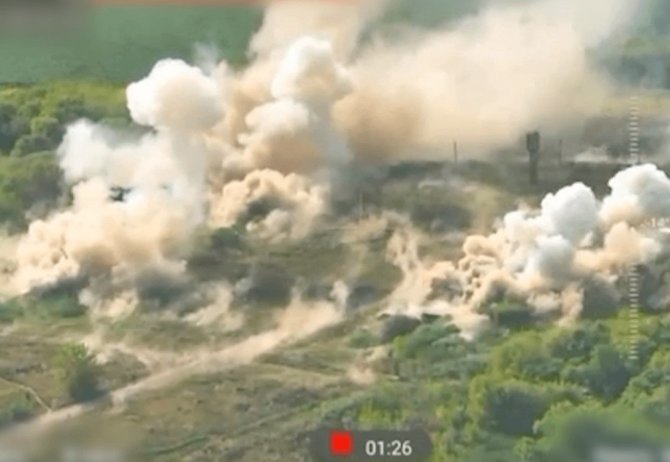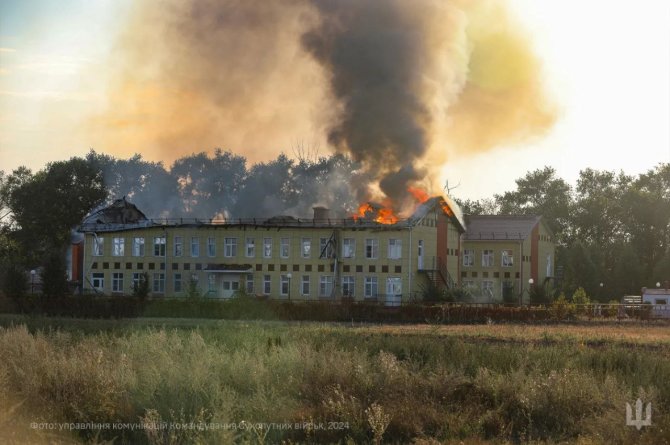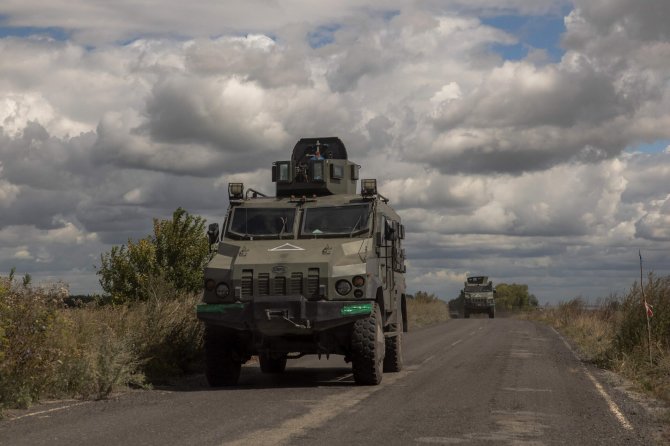Their starting point was the August 17 post by Russian blogger Platon Mamatov. a video shot by a drone and published on social networks, which for the first time recorded the deaths of civilians in Korenev during the Kursk offensive. It shows the bodies of dead people dressed in civilian clothes, and in Kurilovka, cars of civilians trying to leave were reported to have been fired upon. At least two people are reported to have died in the circumstances.
The conclusions of the authors of the article are based on verified videos, satellite photos and testimonies of almost 20 residents of the Kursk region.
The video in question, which shows at least eight bodies in civilian clothes, was taken in the early days of the offensive in Ukraine, the first invasion of Russian territory since World War II.
There were intense clashes between Russian and Ukrainian soldiers around Korenev, and there was firing in both directions, so it is impossible to determine who is responsible for the deaths of Russian civilians based on the available information.
“The deaths in Korenev are the clearest known example of how many Russian civilian casualties were claimed by the occupation of Ukrainian territory in Kursk. They also highlight Ukraine’s unexpected situation – for the first time in the two-and-a-half-year war, it is an invading and occupying power,” The New York Times pointed out.
Ever since Ukrainian forces unexpectedly invaded western Russia more than two months ago, the experience of ordinary Russians has been hard to gauge, journalists pointed out.
Cell towers have been destroyed, making it difficult to reach residents. The region is largely inaccessible to independent journalists, and news reports are dominated by propaganda, as both Russia and Ukraine have reasons to downplay the human toll.
Civilians who went to the scene in Korenev after Russian troops pushed out Ukrainian forces described the remnants of chaotic and violent clashes.
“Every car that approached the place was fired upon,” said volunteer Marija Skrob, who helped transport the bodies to the morgue in the provincial capital. “Everyone tried to escape, but as you can see, they couldn’t.”
Drone footage and photos showed eight bodies. Ms. Skrob described the bodies as unrecognizable from the heat and said a total of 15 bodies were found at the scene, a number that could not be independently confirmed.
In an interview, she claimed that Ukrainian soldiers fired at fleeing civilians in Korenev, but did not provide any evidence. Residents of the nearby village of Kurilovka also said Ukrainian forces fired at fleeing civilians. Ukraine has denied the allegations, and none of the claims could be independently verified.
Residents said that intermittent shelling by Ukrainians in previous months and a lack of warnings by local officials had led many locals to ignore the signs of impending battle and stay home until it was too late.
Olga, a resident of Korenevo, shared with journalists that she was sitting at the dinner table with her family when she heard the explosions.
“Korenev turned into hell,” she said in a telephone interview. “No one came to evacuate us, no one told us to leave.”
After the local officials fled, the residents took it upon themselves to evacuate those who needed help the most. However, on August 10 Russian soldiers still in Korenev told volunteer Ivan Naumov that it was too dangerous to stay here.
“Putting your nose in there is pointless – he’s in the gunsights,” said I. Naumov, a firefighter and rescuer, in a voice message to other volunteers in The New York Times. “It’s like death.”
He told others to avoid crossing the bridge over the Krepna River to the eastern suburb of Korenevo.
Later, the bodies were discovered near the bridge named after I. Naumov.
The Russian government has not released details about the deaths in Korenev. In a statement, the Ukrainian military dismissed descriptions or accounts of the deaths as Russian propaganda.
The invasion of Ukrainians creates a moral burden for the government in Kyiv, sociologists and military analysts shared their opinions with the authors of the publication.
In Kursk, Ukrainian soldiers found themselves assessing threats from real and imagined spies and saboteurs, and facing thousands of citizens from a nation that had destroyed part of their homeland.
According to reporters at The New York Times, Ukraine’s military is now being monitored for compliance with the same rules of war that Russian troops have violated thousands of times in Ukraine — executing, torturing, raping and forcibly transporting Ukrainian children to Russia, as documented by Ukrainian and international prosecutors.
Ukrainian Human Rights Commissioner Dmytro Lubinets once again assured that his country will comply with humanitarian laws.
“We are different,” he said in an interview shortly after the invasion of the Kursk region. “This is the main argument for our international partners to provide assistance.”
The Ukrainian military said in a statement that “no violations of the Geneva Conventions were recorded” in Kursk.
A video posted on social media shows Ukrainian soldiers delivering water to residents of Suja.
Ukraine in August established a military administration in Kursk to provide humanitarian aid, public order and basic services in the occupied land. September 18 Oleksiy Dmytrashevsky, a spokesman for the Ukrainian military administration in Kursk, told Agence France-Presse that “several thousand” civilians remained in Ukrainian-controlled territory at the time.
However, the government in Kyiv has provided little other information about the institution’s work, and O. Dmytrashevsky did not respond to requests for an interview.
Civilians presented a mixed picture of Ukraine’s actions in Kursk.
Some Russians said they safely passed Ukrainian soldiers on the first day of the invasion, August 6, as they fled.
“I almost ran into them on the road,” said Sergej, a resident of Korenevo, describing his encounter with Ukrainian armored columns. “For some reason, no one shot at me.”
The New York Times spoke with three people who fled to safer areas but managed to speak with family members who stayed behind. They spoke of quite benevolent behavior.
One elderly man said Ukrainian soldiers brought him fresh bread and canned meat. Platon Mamatov, a Russian soldier and blogger, said drone flights over the occupied territory found signs of daily routine, including footage of a woman working in a garden and a man drawing water from a well.
There were also signs of tougher behavior.
In one video verified by The New York Times, two Ukrainian soldiers mock an elderly Russian man on a road outside the occupied city of Suja.
“You are a Russian pig,” says one Ukrainian soldier mockingly in German.
According to soldiers who participated in the Kursk operation, Ukrainian commanders instructed their units to treat civilians humanely. Members of the 61st Mechanized Brigade were told to “avoid conflict” with civilians and “provide aid as doctors would,” said Lt. Col. Artiomas Cholodkevich, the brigade’s deputy commander.
But as Russia’s efforts to retake territory intensify, so does the danger to civilians, military analysts said.
Source: www.15min.lt





